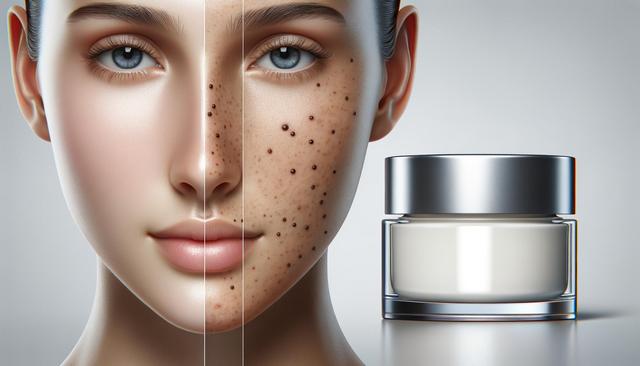Understanding the Causes of Dark Spots
Dark spots, also known as hyperpigmentation, are a common skin concern that can affect individuals of all skin types and tones. These spots often appear due to excess melanin production, which can be triggered by various factors. Common causes include sun exposure, hormonal changes, acne scarring, and aging. Understanding the root cause of your discoloration is essential for determining the most effective dark spots removal approach. By identifying whether your dark spots are the result of sun damage or post-inflammatory hyperpigmentation, you can choose targeted treatments that provide better results and support skin brightening over time.
Hyperpigmentation treatment begins with preventive care. Regular use of sunscreen, avoiding harsh skincare ingredients, and maintaining a healthy skincare routine can help prevent the formation of new spots. Early intervention is also key—addressing pigmentation as it appears can minimize long-term discoloration and contribute to clearer skin.
Topical Treatments for Dark Spot Reduction
One of the most accessible and widely used options for dark spot treatment is topical application. Numerous over-the-counter and prescription products are formulated specifically for dark spots removal. These work by inhibiting melanin production or by accelerating cell turnover to fade existing discoloration. Ingredients commonly found in these treatments include:
- Niacinamide – minimizes inflammation and supports even skin tone
- Vitamin C – promotes skin brightening and protects against oxidative stress
- Alpha Arbutin – reduces the look of dark patches by targeting hyperpigmentation
- Retinoids – accelerate cell turnover and improve skin texture
- Azelaic Acid – effective for both acne and pigmentation concerns
Consistency is vital when using topical products. Most treatments require daily use over several weeks to months to show visible results. It’s important to follow product instructions carefully and pair them with daily sun protection to prevent further pigmentation.
Professional Skincare Procedures
For those seeking more intensive dark spots removal, professional skincare treatments can offer noticeable improvements. Dermatologists and licensed estheticians provide several options that address various types of hyperpigmentation, often with quicker results compared to topical products. Some of the most commonly performed procedures include:
- Chemical Peels – exfoliate the upper layers of skin to reduce discoloration
- Microdermabrasion – gently resurfaces the skin to improve tone and texture
- Laser Therapy – targets melanin deposits with precision to fade dark spots
- Intense Pulsed Light (IPL) – uses broad-spectrum light to treat pigmentation irregularities
These treatments are typically done in sessions and may require downtime depending on the intensity. Consulting a qualified skincare professional is crucial to determine the right procedure based on your skin type and pigmentation severity. Combining professional treatments with at-home skincare can optimize results for achieving clear skin.
Natural Remedies and Lifestyle Adjustments
In addition to clinical and cosmetic treatments, some individuals opt for natural remedies to support skin brightening and reduce dark spots. While not as fast-acting as medical-grade solutions, certain ingredients may help with mild pigmentation when used consistently. Examples include:
- Aloe Vera – soothes the skin and may reduce post-inflammatory marks
- Green Tea Extract – contains antioxidants that protect and renew skin
- Licorice Root – known to support skin tone balance and reduce discoloration
Alongside these remedies, lifestyle changes can contribute to healthier skin. Staying hydrated, eating a nutrient-rich diet, managing stress, and getting enough sleep all play roles in overall skin health. While these approaches may not replace targeted dark spot treatment methods, they can complement other efforts and promote long-term skin stability.
Maintaining Results and Preventing Recurrence
Achieving an even complexion is only part of the journey—maintaining those results is equally important. Once dark spots have faded, ongoing skincare and protection are necessary to prevent recurrence. Key practices include:
- Daily use of broad-spectrum sunscreen with SPF 30 or higher
- Limiting sun exposure, especially during peak hours
- Continuing the use of gentle skin brightening products to maintain tone
- Regular exfoliation to encourage healthy skin turnover
Monitoring how your skin responds to different products and environmental factors can help you adapt your routine accordingly. With consistent care and attention, it’s possible to enjoy clear skin and minimize the chance of pigmentation returning.
Conclusion: A Consistent Approach to Clearer Skin
Addressing dark spots requires a combination of understanding their causes, choosing effective treatments, and maintaining healthy skin habits. Whether you opt for topical solutions, professional procedures, or natural remedies, a consistent and informed approach is key. By investing in the right hyperpigmentation treatment, you can work toward a more radiant complexion and feel more confident in your skin. Remember, patience and persistence are essential when it comes to dark spots removal—visible improvements take time, but with the right care, clearer and brighter skin is achievable.




Leave a Reply